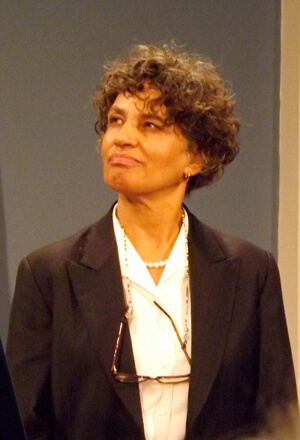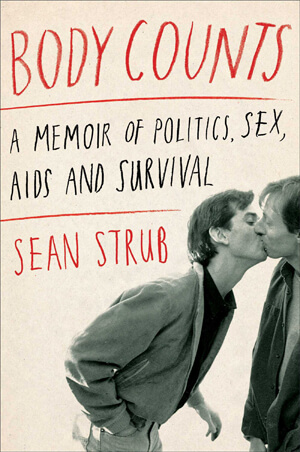Chris Mason Johnson’s “Test” is set in the San Francisco danceworld of 1985. | VARIANCE FILMS
BY GARY M. KRAMER | Set in 1985 San Francisco, the low-budget “Test” is a compelling drama about the onset of the AIDS crisis. Frankie (Scott Marlowe) is a dancer whose unease about the epidemic is palpable. His concerns are contrasted with those of his fellow dancer, Todd (the magnetic Matthew Risch), who has a more unconstrained attitude toward sex and life. In Frankie’s eyes, Todd seems more likely to “get it,” but Frankie gets himself tested after a series of sexual encounters that scare him.
“Test” aptly conveys the anxiety of the early days of AIDS and how young gay men grappled with their fears. Viewers will care about what happens to Frankie and also have the chance to enjoy lengthy dance sequences — both rehearsals and performances.
In a recent phone interview, writer and director Chris Mason Johnson discussed what prompted him to make “Test” — and why it was important that this AIDS film have characters who do have sex.
With dance, filmmaker Chris Mason Johnson moves beyond words to tell the story of AIDS
“AIDS films in general — if we can use that label — have been death-bed stories,” Johnson explained. “That’s understandable. Those stories needed to be told first for political and emotional reasons, and it’s understandable that sex is edited out of AIDS stories.”
Without the sex, however, Frankie’s anxiety would not be as resonant, he added.
“I have a young male dancer protagonist who wants to have sex,” Johnson said. “I wanted to put the sex back in the story, and make it tense and difficult because he is paranoid about illness. I also wanted to make it real, human, funny, and erotic. I didn’t want to sanitize the sexuality out of the story just because we’re dealing with the theme of HIV/ AIDS.”
“Test” succeeds at this goal. Symbols, such as mice in Frankie’s apartment, are employed to represent the randomness of contracting the AIDS virus. In one scene, a mouse dies in a glue trap; in another, a mouse gets to live a happy life, even if caged.
Johnson’s film is about other tests than simply the one to determine HIV status. Frankie is an understudy in a dance company and at one point in the story gets the opportunity to appear in a performance. The filmmaker explained that the world of dance is intended to mirror the hurdles gay men of that era faced from AIDS.
“The whole idea was to set the film in the dance world where the body was the focus,” he explained. “More broadly, I wanted to tell a story that was not verbal, not told through dialogue. That was the experience of young men during the epidemic who were not out and proud. They were suffering for years in isolation and silence. The challenge was to do this cinematically and visually and not be dialogue-dependent. The body becomes the focus — as an erotic site, as a body that dances, and as a body that gets diseased. We tried to combine all that through the choreography, which is fraught with erotic and macabre images and gestures lifted from the crazy and erotic paintings of Egon Schiele.”
The dance sequences are beautifully done, and Johnson cast Marlowe — a performer from San Francisco’s dance world — in the lead role because he would lend naturalism to the part. The two men workshopped the project for six months, and then Johnson brought in Risch, a musical theater actor with dance credentials, to play Todd.
“He could fit in with the other dancers, even though he’s not the same kind of dancer.” Johnson said.
The filmmaker was deliberate about choosing two very different kinds of performers — who play friends, enemies, and potentially lovers — because their characters are different, visually and emotionally. Todd is cavalier about sex and death, while Frankie is often scared and intimidated, and their relationship is full of frisson.
“Todd’s toughness is an act, which is a common psychological thing with characters like that,” Johnson explained. “I wanted the ‘opposites attract’ kind of feeling, and if everyone in the story had Frankie’s attitude, his paranoia and fear, there wouldn’t be much contrast and conflict. I wanted to set them into play. They are fun to watch, even if they are not fun to be with in real life.”
The third test the film’s characters face becomes clear at the end, when one character suggests AIDS enforces monogamy on gay couples. It’s a theme Johnson develops throughout the film, with Frankie’s roommate, Tyler (Evan Boomer), embracing a heterosexual relationship despite being attracted to Frankie.
“The early AIDS epidemic chased a lot of young men back into the closet for a decade,” Johnson argued. “Tyler the roommate is an example of that trend or reaction.”
That third test resonated in the gay community through the succeeding decades, the filmmaker suggested.
“There was this tension — assimilate or maintain your identity,” Johnson said of his story’s setting. “I’m all in favor of gay marriage but I want to point out that the assumption of normality and monogamy and being mainstream and just like everyone else is a great thing but you also lose something, like you do with gentrification.”
He recognizes that this last point is controversial.
“I wanted to be provocative and also point out that in the beginning the move toward monogamy in the wake of the early AIDS epidemic was also fear-based and an insurance plan,” Johnson explained. “That’s not to say people didn’t value emotionally committed relationships, but that it was over-determined.”
In that sense, Johnson’s absorbing film aims to say something about today as well as about 1985.
TEST | Directed by Chris Mason Johnson | Variance Films | Opens Jun. 13 | Quad Cinema | 34 W. 13th St. | quadcinema.com



































